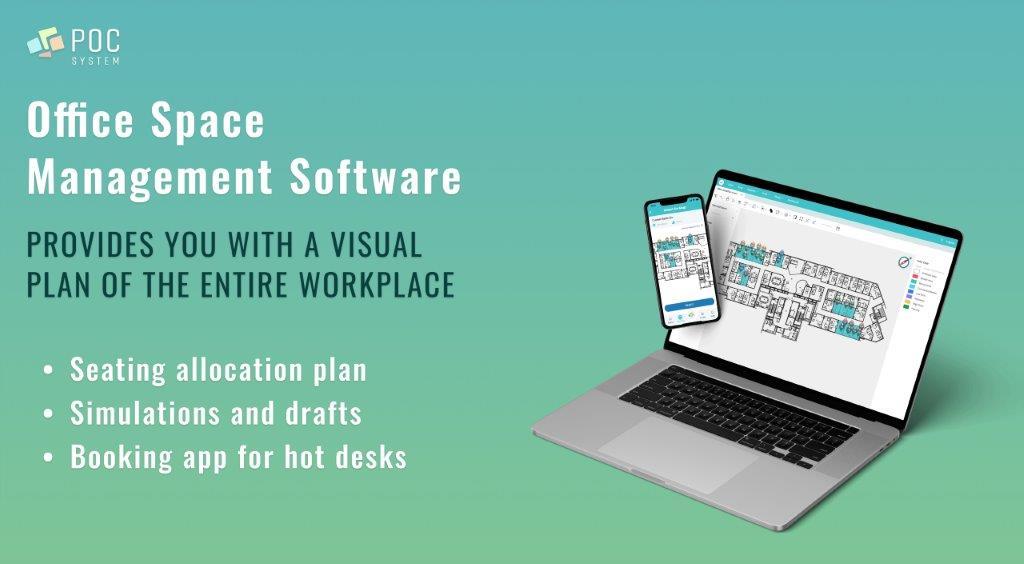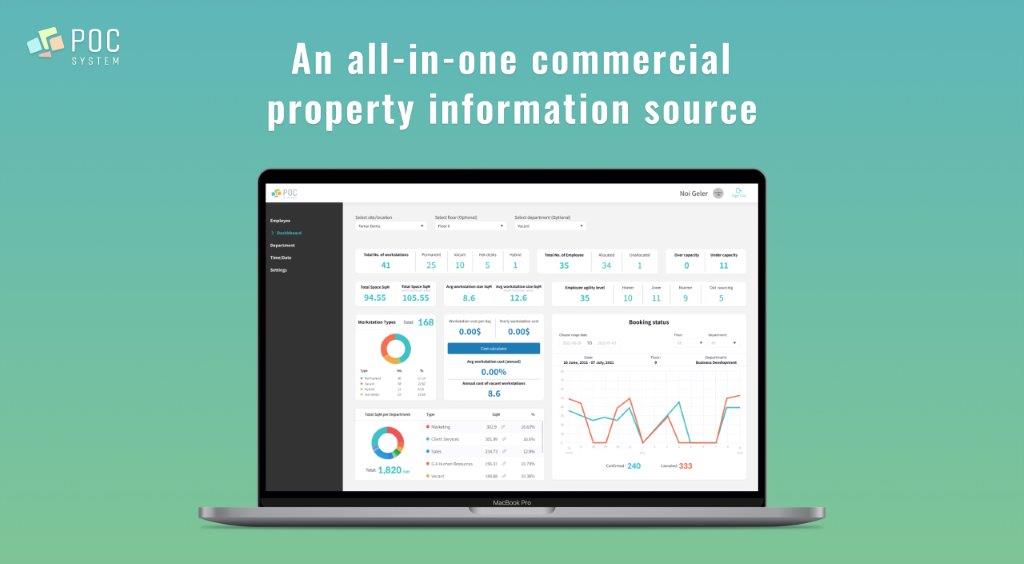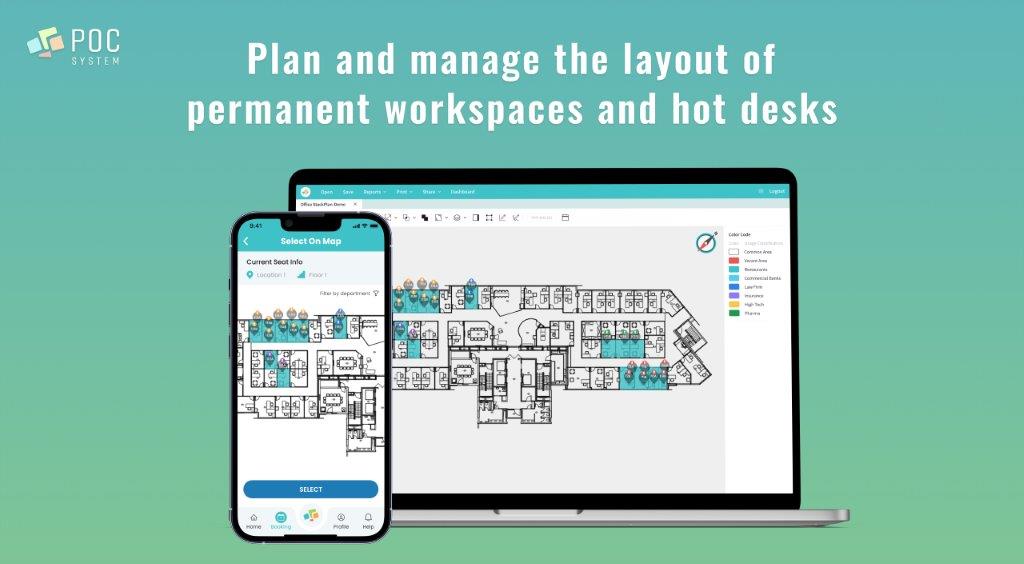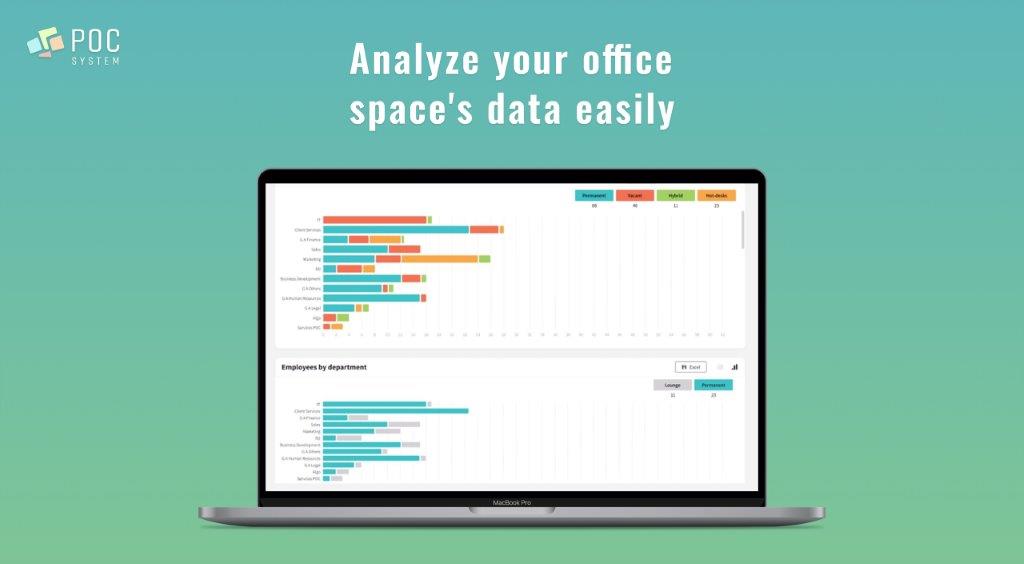7 Key Space Utilization Metrics You Should Consider in 2023
Updated March 6, 2023.

The space utilization analysis aids in measuring how offices and other workspaces are used. Specifically, it measures the function and efficiency of a given area with the ultimate goal of having maximum use regardless of occupancy.
Without a centralized system, efficiently ensuring optimal space utilization is considerably more challenging, which may be time- and cost-intensive for any business.
Overview of the 7 Key Metrics for Space Utilization
Using the available facilities, businesses must ensure optimal space utilization to meet individuals' needs. There are seven essential metrics organizations can use to monitor and improve space utilization.
Effectively Automate the Process of Space Utilization
Save valuable time when customizing office arrangements with POC System's space management software.




- Maximize Employee Productivity: You will be able to provide the optimal work environment for your staff to perform well in their roles.
- Make better use of your resources: With the app's real-time tracking features, you can easily identify usage patterns and determine which resources are most used and at what times.
- Cloud-based solution: With its comprehensive suite of features for managing space, this SaaS solution is a must-have for modern businesses with a hybrid work style.
1. Capacity vs. Occupancy
Capacity and occupancy measure the potential for a space to be utilized compared to how many people actually use it. For instance, if there is a conference room that fits 20 individuals but is usually used for meetings with only four to five people, this indicates that the space should be divided into three or four more compact meeting rooms to serve your employees' needs better.
2. Average Peak Utilization
To better understand your space's busiest hours and whether the demand is being met, you can measure average peak utilization by analyzing the capacity in each of your office or educational facilities (such as rooms, collaborative spaces, and event spaces) over a set period.
Examining occupancy trends can help you recognize when your space is utilized the most: weekdays, weekends, or holidays. Using this data to your advantage can help you make sure that your rooms are always filled with people and running at peak efficiency, no matter the time of day.
■ Want to ensure employee satisfaction? Learn how to optimize your office space
3. Space-Specific Utilization Rate
This space utilization rate considers the size of individual workspaces, support spaces, and pathways within a facility. However, special spaces (e.g., storage rooms, server closets, data centers, mechanical spaces) are taken out of the equation as their sizes are typically dictated by specific needs rather than the number of occupants in an office area. Measuring special space efficiency is best done through agency design guidelines or other evaluation criteria.
4. Total Office Utilization Rate
To calculate this metric, you need to consider all usable areas of your organization and do away with any space utilized for laboratories, storage, or warehouses. Subsequently, a reduction rate of 22% is applied to mirror the expected total amount required for essential support spaces such as conference rooms and their corresponding walkways.
The subtotal estimates the space occupied in each workspace, such as workstations and private offices. When this number is divided by the total occupants within, it forms the total office utilization rate—a useful indicator to determine if your office space is being efficiently utilized.
5. Space Popularity
Measuring space popularity can help organizations understand which meeting spaces or collaborative areas are in high demand. As you measure your space use, remember to factor in days and times that are especially busy. Your usage will vary according to the day, such as when some teams work remotely and only come into their offices on specific days.
Although employees may opt for what works best for them individually, these patterns help offer insight into how your space is utilized and what areas need updating or improvement.
6. Density Ratio
Density is the square footage assigned to each employee in an office setting. In pricier business districts, there tends to be less space available per employee, resulting in higher density rates.
Space utilization density ratios can help you gauge whether your office is utilizing space efficiently or if there are areas that could be expanded to accommodate more employees, such as common areas and collaborative spaces. Additionally, by looking at these ratios over time, you can track how changes to your space usage may impact overall productivity and employee satisfaction.
7. Cost Per Person
The U.S. General Services Administration offers an incredibly useful Cost Per Person Model (CPPM) developed in Excel to help organizations determine and review their cost per person. It was specifically formulated for real estate operations but can also be applied to any other core business areas.
Examining cost per person can provide critical insight into creating agile workspaces and help facilities managers identify potential inefficiencies within desk arrangements, meeting rooms, and other work areas.
Allow Us to Streamline the Process
The POC System is a dynamic, user-friendly, and intuitive graphical platform. It captures, analyzes, and displays data in real-time and provides accurate space utilization analysis to help your facility operate efficiently.
Gain an insightful comprehension of your current space usage with a user-friendly and interactive platform, allowing you to evaluate, plan, and improve how you operate. Book a free demo now!
■ Discover POC System's space management solutions
